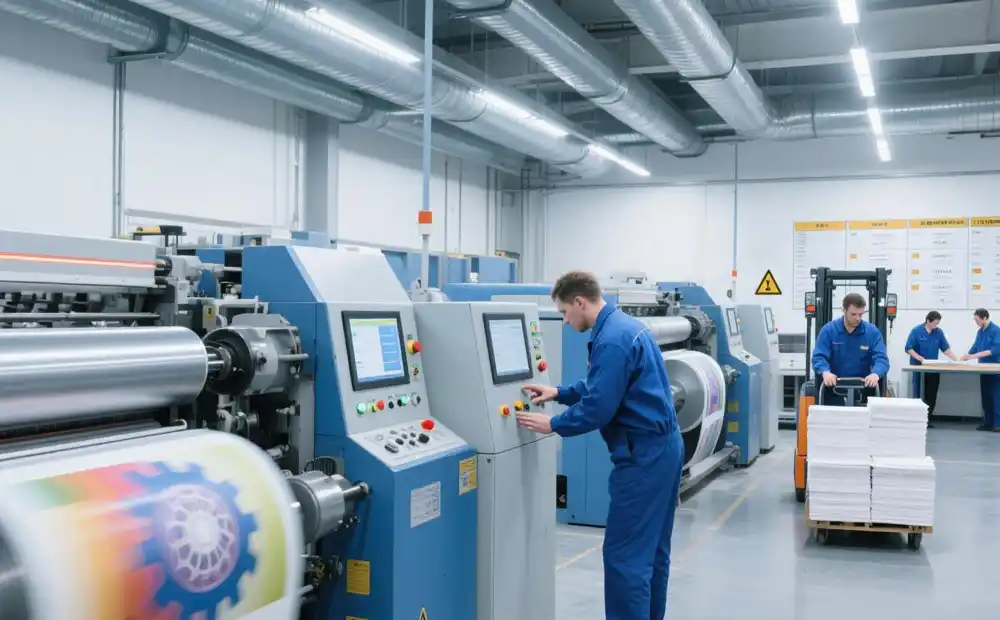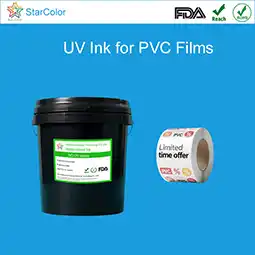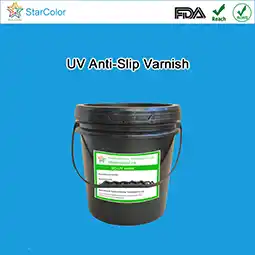Reducing Water Based Flexo Ink Use Without Quality Loss
Date: Aug 13 2025 From: Star Color Views:
I. Ink Selection
(1) Advantages of High-Solid-Content Inks
During the ink selection phase, high-solid-content water-based inks offer significant advantages. Traditional water-based inks typically have a solid content of 30%-40%, while high-solid-content variants can increase this ratio to 50%-60%. This means that for the same printing effect, high-solid-content inks can reduce usage by 20%-30%. With a higher pigment concentration, less ink volume is required to form a film of the same thickness. Additionally, the tight arrangement of pigment particles enhances color saturation and hiding power, meeting the high-quality color demands of packaging printing. However, higher solid content is not always better—it must be matched to the printed pattern and production process.(2) Impact of Pigment Characteristics
Pigment properties have a profound influence on ink consumption. Pigments with fine particle sizes and good dispersibility distribute evenly in the ink system, reducing agglomeration and improving ink transfer efficiency. For example, water-based inks made with nano-sized pigments, compared to those with conventional pigments, achieve clearer dot reproduction in fine pattern printing while reducing ink demand by 10%-15%.II. Equipment Optimization
(1) Adjusting Anilox Roller Parameters
As the core ink supply component in flexographic printing, anilox roller parameters directly determine ink transfer volume. High-line-count anilox rollers (e.g., 800 lines per inch) have smaller cell volumes than low-line-count ones (e.g., 400 lines per inch), reducing ink transfer by 30%-40% under the same printing conditions. However, high-line-count rollers have higher requirements for ink fluidity and pigment fineness, requiring pairing with high-solid-content, low-viscosity inks with well-dispersed pigments to ensure smooth cell filling and transfer to the printing plate. For fine patterns, high-line-count rollers precisely control ink volume, minimizing dot gain and ensuring clarity; for large solid areas, combining adjusted roller line counts with optimized ink formulations balances ink usage and print quality.(2) Upgrading Doctor Blade Systems
Traditional open doctor blade systems are prone to ink splashing and evaporation, causing waste. Closed doctor blade systems solve this issue by precisely controlling blade angle and pressure, allowing ink to circulate in a sealed space, reducing solvent evaporation, and improving ink utilization. After upgrading to a closed doctor blade system, one label printing company reduced monthly ink loss from 5% to below 2%.
III. Process Improvements
(1) Optimizing Printing Pressure
Excessive printing pressure causes over-squeezing of ink, leading to dot gain, thicker ink films, and increased consumption. Insufficient pressure results in incomplete ink transfer, compromising quality. Using pressure-testing equipment to measure the optimal pressure for different material-ink combinations reduces ink usage while maintaining quality. Regular inspections of the press’s pressure system ensure uniform pressure distribution, avoiding waste from localized pressure abnormalities.(2) Applying Thin Film Printing Technology
Thin film printing achieves the required color depth and hiding power by stacking multiple thin ink layers, reducing consumption by 20%-30% compared to single thick-layer printing. In practice, ink formulations must be adjusted to enhance transferability and drying speed, adapting to the demands of multiple printing passes.In conclusion, it is possible to reduce ink consumption in water-based flexographic printing without sacrificing quality through ink selection, equipment optimization, and process improvements. Enterprises can systematically lower ink usage while ensuring print quality, achieving overall cost savings of 5%-10%.
 RU
RU EN
EN CN
CN















